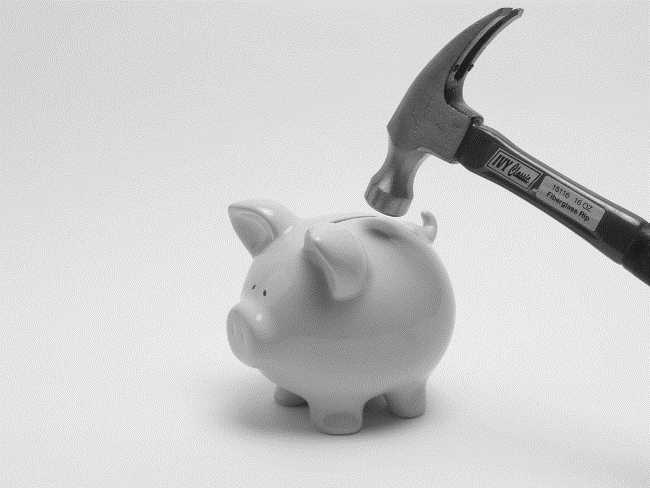Production costs include all kinds of expenses and cash expenses that will need to be implemented to create the goods. For any company, they act as payment for purchased factors of production, that is, they cover payment for materials, employee salaries, depreciation, and also costs that relate to production management.
After the sale of goods, the entrepreneur receives cash revenue, part of which must fully compensate for the above costs, while the other gives the profit for which this production was organized.
Opportunity Costs - What is it?

The predominant part of production costs includes the use of various production resources. Moreover, if certain production resources can be used in one place, they cannot be used in another, because they differ in properties such as limited and rare. For example, the money that is needed to purchase a blast furnace for making cast iron cannot be spent simultaneously on making bricks. Thus, if some resource begins to be used in one or another sphere, the opportunity to use it in another way is lost.
Thus, any decision to manufacture a particular product provides for a complete rejection of the use of the same resources in order to produce some other types of products. It is this type of costs that is called "opportunity costs." And they should be taken into account in the process of keeping records of the work of any enterprise.
Opportunity costs are expenses for the manufacture of a certain product, which are estimated from the point of view of the lost opportunity to use these resources for another purpose.
How to evaluate them?
In order to find out how to evaluate them, you can take Robinson, who lived on a desert island, as an example. Oddly enough, but even in this case there are opportunity costs.

For example, near his hut, he began to grow corn and potatoes. The land is limited on one side by the ocean, on the other - by the jungle, and on the third there are rocks. Under these conditions, Robinson decides to expand the production of corn, but he has only one option to realize this - to increase the area that corn will occupy by reducing the area that is currently occupied by potatoes. In this case, the alternative production costs of each subsequent corncob in this case can already be expressed in potato tubers, which he received less, using the potato land resource for growing corn.
What to do with mass production?
This example applies only to two products, but what needs to be done if there are hundreds or even thousands? It is in this case that opportunity costs are measured in money, with the help of which the balance of all other products is ensured. To determine and calculate them, a qualified specialist is hired to be able to calculate them, as well as to note any changes and their consequences.
Features
Opportunity costs can be called the difference between the profit that the company could get in the case of the most profitable among all real alternative options for using resources, and the real profit received. However, there are several features here.
Not all costs of an entrepreneur can be called opportunity costs.With any method of using resources, the costs incurred by the manufacturing company in an unconditional order can hardly be called alternative. Such non-alternative costs do not take any part in the process of economic choice.
What are the differences between implicit and explicit costs?
If we consider the issue from an economic point of view, the concept of opportunity costs provides for their distribution into two groups: implicit and explicit.

Explicit costs are presented in the form of cash payments to suppliers of various factors of production, as well as the necessary intermediate products. In particular, there are several obvious costs:
- Opportunity costs in the form of remuneration of workers.
- Cash costs for the purchase or rental of all kinds of equipment, machines, buildings, structures.
- Paying for various transportation costs.
- Repayment of utility bills.
- Payment of various services of banks and insurance.
- Payment for services of suppliers of material resources.
What are implicit costs?

The implicit costs of an alternative choice are the various costs of using the resources that belong to this company, that is, they represent unpaid costs.
They can be represented as follows:
- Payments that a company could receive if it used its resources more profitably. In particular, this also includes the salary that an entrepreneur could regularly receive if he worked elsewhere, lost profits, interest on capital invested in various valuable documents, as well as rental payments for the land used.
- Normal profit as a minimum reward to the entrepreneur, which keeps him in a particular industry. For example, if a person is engaged in the production of fountain pens, and considers it quite acceptable to receive normal profit in the amount of 15% of the capital that he invested. Moreover, if the production of fountain pens will provide the entrepreneur with less than this profit, then in this case he will have to move his capital to other industries that will provide him with at least normal profit.
- The law of opportunity costs of an implicit type provides that for the owner of capital, the profit that he could get if he invested his own capital not in this, but in some other matter, acts as implicit costs. For example, for a peasant who is the owner of the land, such implicit costs are the rent that he could receive if this land were leased to them.
Thus, the opportunity cost of production, in accordance with Western economic theory, includes the income of the entrepreneur, and it is considered as a risk payment, which the entrepreneur is rewarded with, and is also encouraged to retain his own financial assets in the enterprise, without distracting them from the realization of any or other goals.
What are the differences between economic and accounting costs?

Production costs, which include average or normal profit represent various economic costs. Economic, or various time costs, in modern theory are the costs of the company, which are carried out in conditions of making the best business decisions regarding the use of resources. This is precisely the ideal that the company should strive for as much as possible. Of course, the real picture of building overall costs is a little different, because any ideal will be elusive.
It is worth noting that economic costs are not the same as those used in accounting. AT accounting costs the entrepreneur’s profit is not included, which is reflected in such an indicator as production capability curve. The opportunity costs of production, which is operated by economic theory, in comparison with accounting, differ in the assessment of internal costs. The latter, in turn, are associated with costs incurred through the use of our own products in the production process. For example, a certain part of the grown grain harvest is used to sow the firm’s land. The company will use such grain for domestic needs, as a result of which it does not pay.
In accounting, internal costs should be accounted for in accordance with cost. However, from the point of view of the pricing of the goods released, such opportunity costs must be estimated at the market price of the resource expended.
External and internal costs
Internal costs associated with the use of any of its own products, which will be further processed into a resource for subsequent production.
External costs include the costs of funds that are required to purchase resources owned by people who are not owners of this company. It is these costs that will subsequently become the revenues of resource providers.
Production costs that are incurred in the manufacturing process of a product can be divided into categories not only depending on what resources were used - the company itself or those for which it was necessary to pay. There are also other opportunity costs. Production capabilities should be considered from all points of view in order to thoroughly calculate and establish the ideal efficiency of the entire system.
Average cost

In order to determine as clearly as possible the possible volumes of production at which the company can protect itself from a significant increase in costs, we study the dynamics of average costs.
It is worth noting the fact that Marx, based on this type of costs, completely built the concept of production prices, as well as the average rate of profit that accounts for capital. The type of costs There is also a company’s accounting department, however its arsenal is an order of magnitude more voluminous, and the main and marginal costs are assigned to it. A thorough analysis of their structure and dynamics is necessary in order to determine the optimal volume of production and to establish the possible boundaries of the movement of costs at which production will continue to be profitable.
For the manufacturer, not only gross, but also average costs are important, which are used to compare with the cost, which is mandatory for each unit of production.
The opportunity cost curve includes the average cost to address the question of whether or not to engage in the production of these products. In particular, if the cost, which is the average income for each individual unit of production, is lower than the average variable costs, then the company will be able to minimize its losses by stopping its activities in the short term. If the price is below the average total cost, then in this situation the company begins to receive negative economic profit, as a result of which it should, in principle, consider the prospect of final closure.
Time cost
A person does not have the opportunity to have everything that he would like, as a result of which he has to choose based on the amount of income. In the vast majority of cases, people prefer to choose products that ultimately can bring them maximum satisfaction.

To acquire a certain product, a person will need to give up something, because his capabilities are limited. That which it is necessary to refuse at acquisition of the chosen thing, is called time expenses. When purchasing a product, they usually give money in return, but in fact it will be necessary to abandon the desired thing, which is the next one in importance, and which could be purchased for the same money.
The company, like every person, also needs to make a choice where it is best to spend the money that it has at the moment. For example, if for a certain product the opportunity cost is equal to the current profit, then obviously it is not worth it to engage in the development of this sphere. But at the same time, it is possible to carry out the construction of new facilities or the reconstruction of existing ones, or, perhaps, to pay dividends to shareholders. In this case, the primary task of management is to correctly identify the most important problem, after which it will be necessary to direct all efforts to its solution.
But at the same time, it is worth remembering that the cost of the missed opportunity represents the cash proceeds from the most profitable among all possible ways to use certain resources, and it should be based on this.

